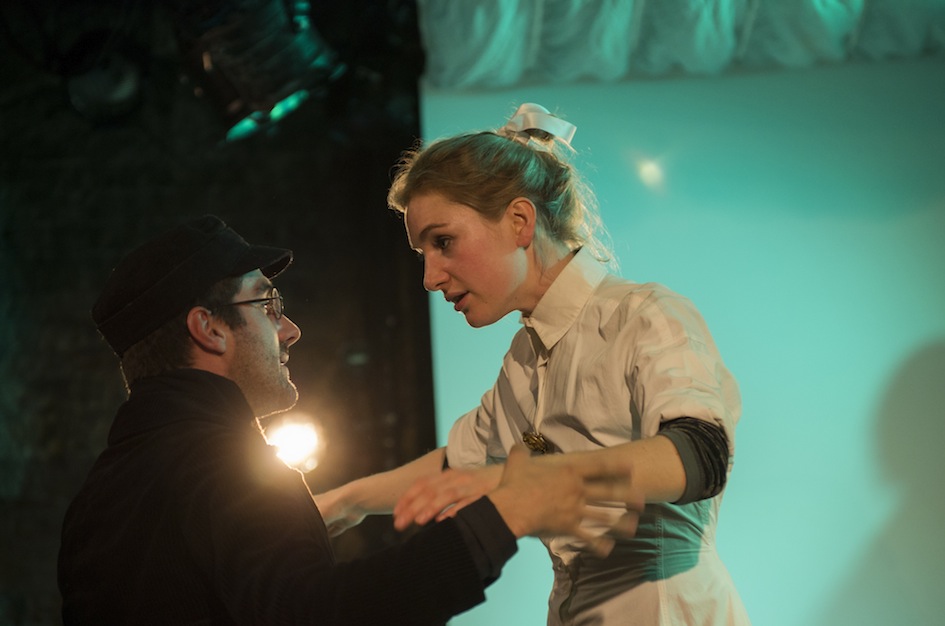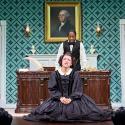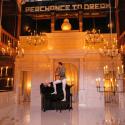The opening of Charles Dickens's novel A Tale of Two Cities is among the most famous ever written: "It was the best of times, it was the worst of times, it was the age of wisdom, it was the age of foolishness…". If the publicity for this stage adaptation is to be believed, it is a scarcely less exalted addition to the mythology surrounding this novel.
It was written by Terence Rattigan and John Gielgud in 1935, when Rattigan was a young, unknown playwright with only a couple of professional credits to his name, while Gielgud was already renowned for his self-directed performances as Hamlet and Richard II at the Old Vic. The adaptation completed, a cast had been chosen and work had begun on the set when the whole enterprise was called off. The producer, Bronson Albery, decided to postpone it out of courtesy to Sir John Martin-Harvey, a venerable fixture of the London theatre scene who was currently playing Sidney Carton in a farewell tour of The Only Way, his own adaptation of Dickens's novel. Devastating as this news must have been for the young Rattigan, he apparently never went back to the script - which is how it comes to have its professional debut now, 78 years later.
There is a hint of madness and danger in his languid poses and fey gestures
All this makes for a thrilling little gobbet of theatrical history, but is it worth the wait? As director Adam Spreadbury-Maher admits in his introduction to the text, this is not quite the play that Rattigan and Gielgud intended. Theirs was to be a West End production, and the text they produced ran to some three and a half hours and required 40 actors. This version has been pared down for a company of just eight, and squeezed inside the intimate confines of a pub theatre.
The driving force behind Gielgud's wish to adapt the novel in the first place was his desire to play Sidney Carton, Dickens's dissolute central character who is moved by his unrequited love for the beautiful Lucie Manette to reform his ways and make the ultimate sacrifice to secure her happiness. This focus on Carton is apparent right from the start - the action of the play is curiously unengaging until he enters in the third scene, and the best of the play's dialogue goes to him. Newcomer Stewart Agnew puts in a superb performance as both Carton and the twisted French aristocrat, the Marquis St Evrémonde. As Carton, he is rakish and cynical, the bad boy lawyer clad all in leather, always with a glass of something in his hand. As the Marquis, there is a hint of madness and danger in his languid poses and fey gestures. With the exception of Paul Beech as the genial and honourable banker Jarvis Lorry, the rest of the cast doesn't quite measure up to Agnew's standard. The Gielgud/Rattigan adaptation attempts to transform Dickens's grand, sweeping novel about the human tragedy of the French Revolution into a domestic affair, focusing on the central love triangle and omitting (no doubt in part for technical reasons) the storming of the Bastille and the big Parisian street scenes. But aside from Carton's witty, doom-laden repartee, the domestic story feels flat and without interest. The great love story between Lucie Manette and Charles Darnay is suggested by little more than a few hand-clasps (as portrayed by Nicholas Bishop and Jennie Gruner, pictured above), and we are given little insight into the life of the Defarges, the play's other central family.
With the exception of Paul Beech as the genial and honourable banker Jarvis Lorry, the rest of the cast doesn't quite measure up to Agnew's standard. The Gielgud/Rattigan adaptation attempts to transform Dickens's grand, sweeping novel about the human tragedy of the French Revolution into a domestic affair, focusing on the central love triangle and omitting (no doubt in part for technical reasons) the storming of the Bastille and the big Parisian street scenes. But aside from Carton's witty, doom-laden repartee, the domestic story feels flat and without interest. The great love story between Lucie Manette and Charles Darnay is suggested by little more than a few hand-clasps (as portrayed by Nicholas Bishop and Jennie Gruner, pictured above), and we are given little insight into the life of the Defarges, the play's other central family.
Some of the production decisions, too, border on the absurd - the bizarre decision for the actors to use hand-held microphones during the Old Bailey scene produces an unpleasant effect in such a small theatre, and the incongruous use of songs like Amy Winehouse's "Rehab" between scenes ensures that the transformation of a pub's back room into the turmoil of revolutionary France never quite takes place.
- A Tale of Two Cities at the King's Head Theatre until 19 October
- Will Gompertz interviews director Adam Spreadbury-Maher on BBC Radio 4's Today programme















Add comment